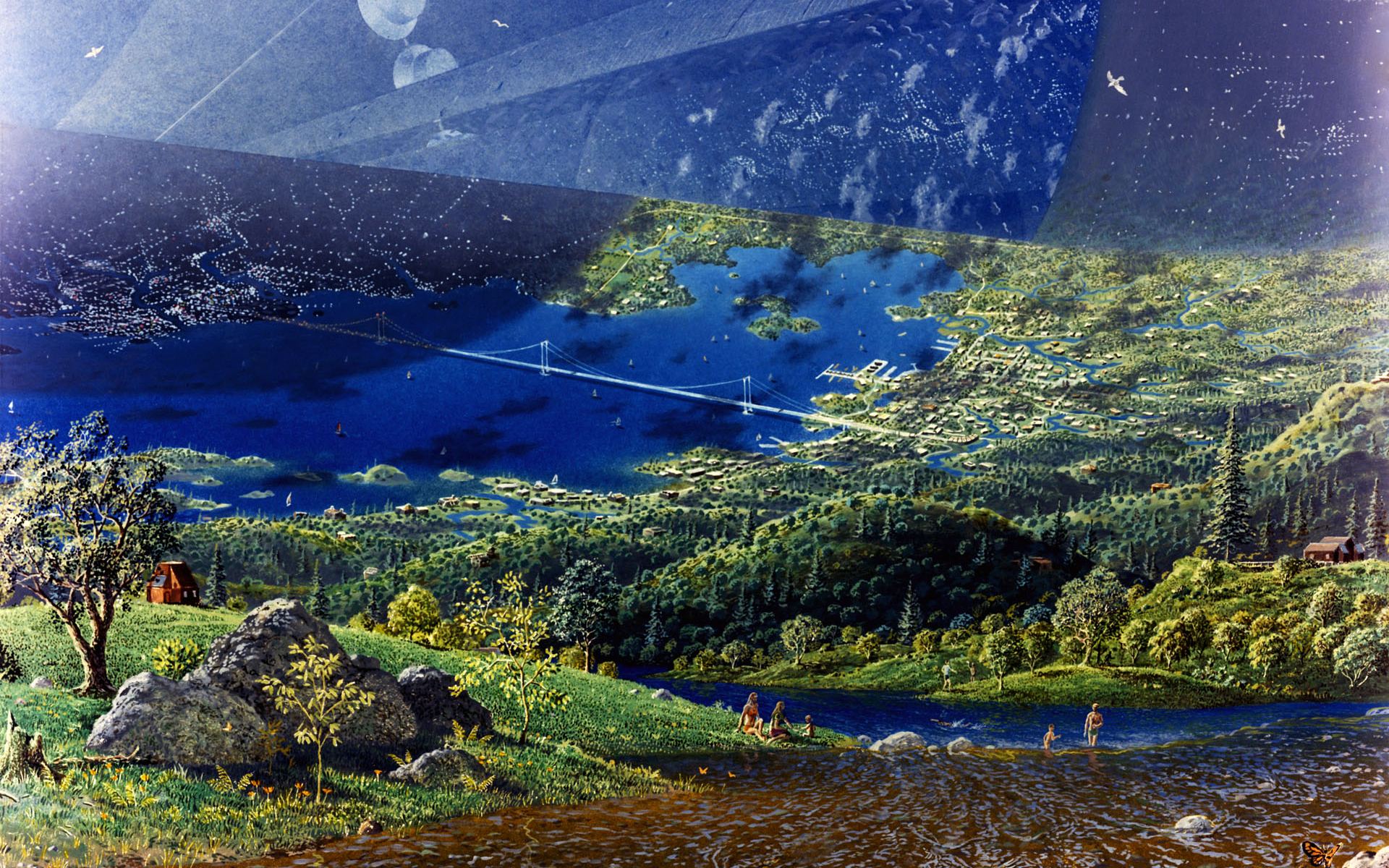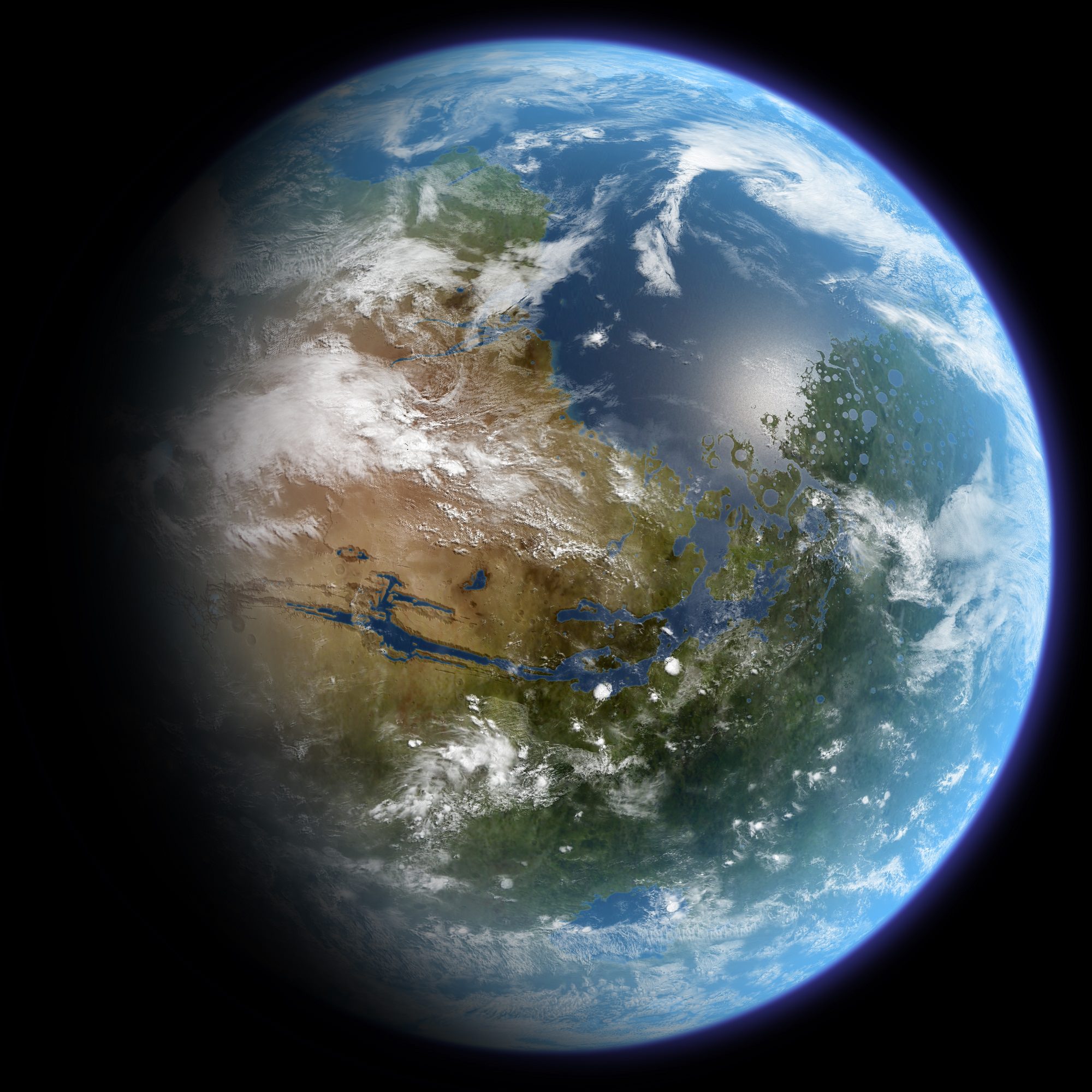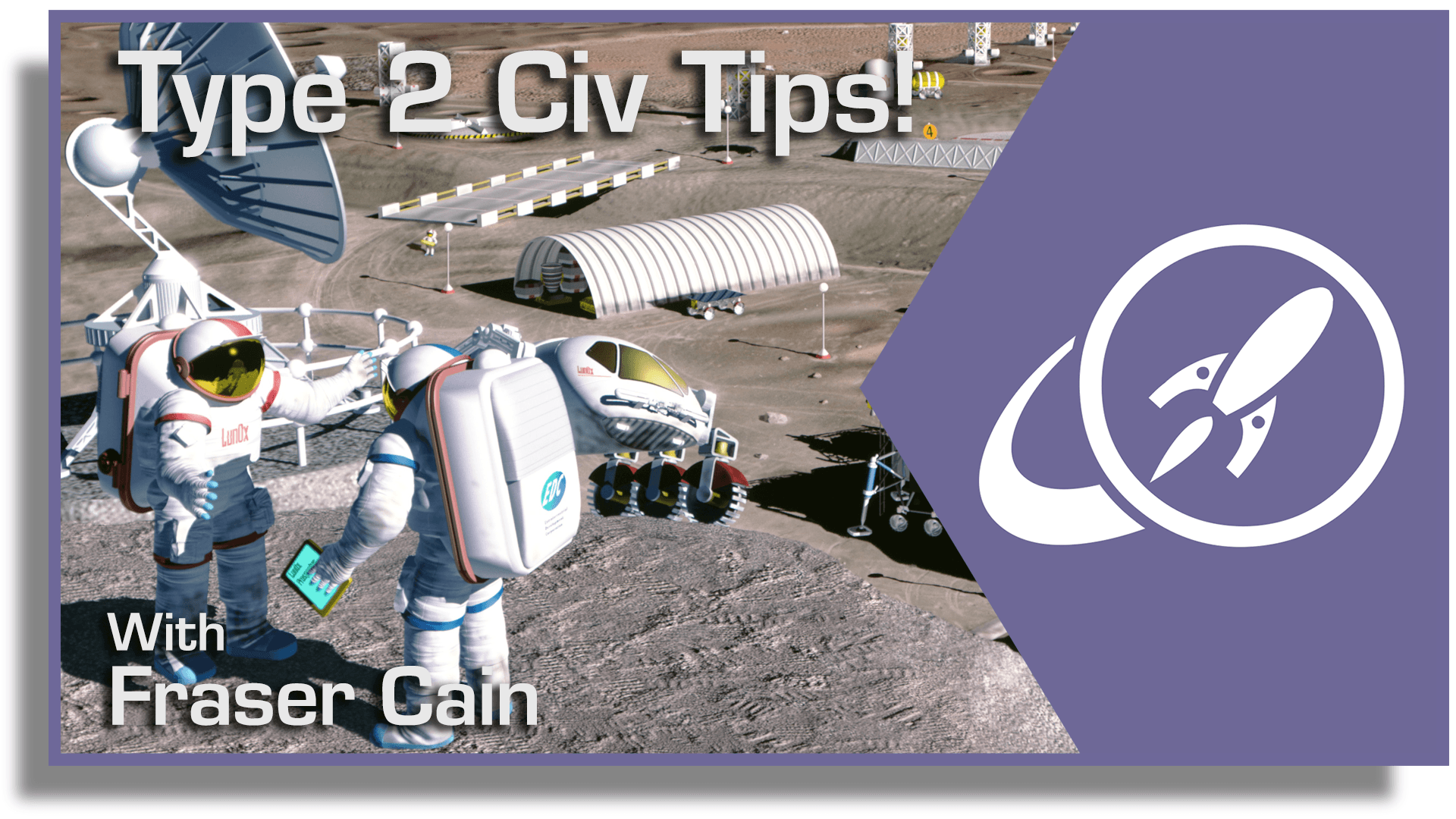For decades, we have seen Mars as a desolate landscape devoid of any signs of life. Attempt to identify ways of growing plants and food on the red planet have focussed on greenhouse like structures to enable plants to survive, that is, until now! A desert moss called ‘Syntrichia caninervis’ has been identified and it can grown in extreme environments like Antarctica and the Mojave Desert. A new study revealed the moss can survive Mars-like environments too including low temperatures, high levels of radiation and drought.
Continue reading “The Rugged Desert Moss Best Equipped to Survive on Mars”Life Might Be Difficult to Find on a Single Planet But Obvious Across Many Worlds

If we could detect a clear, unambiguous biosignature on just one of the thousands of exoplanets we know of, it would be a huge, game-changing moment for humanity. But it’s extremely difficult. We simply aren’t in a place where we can be certain that what we’re detecting means what we think or even hope it does.
But what if we looked at many potential worlds at once?
Continue reading “Life Might Be Difficult to Find on a Single Planet But Obvious Across Many Worlds”A Habitat at Ceres Could be the Gateway to the Outer Solar System
In the near future, humanity stands a good chance of expanding its presence beyond Earth. This includes establishing infrastructure in Low Earth Orbit (LEO), on the surface of (and in orbit around) the Moon, and on Mars. This presents numerous challenges, as living in space and on other celestial bodies entails all kinds of potential risks and health hazards – not the least of which are radiation and long-term exposure to low gravity.
These issues demand innovative solutions; and over the years, several have been proposed! A good example is Dr. Pekka Janhunen‘s concept for a megasatellite settlement in orbit around the dwarf planet Ceres, the largest object in the Main Asteroid Belt. This settlement would provide artificial gravity for its residents while the local resources would allow for a closed-loop ecosystem to created inside – effectively bringing “terraforming” to a space settlement.
Continue reading “A Habitat at Ceres Could be the Gateway to the Outer Solar System”How Science Journalism Helped Me Become a Better Sci-Fi Writer
Hello all. I hope our readers don’t mind that I’m taking a bit of a diversion here today to engage in a little shameless self-promotion. Basically, I wanted to talk about my recently-published novel – The Jovian Manifesto. This book is the sequel to The Cronian Incident, which was published last year (and was a little shamelessly promoted at the time).
However, I also wanted to take this opportunity to talk about hard science fiction and how writing for a science publication helped me grow as a writer. By definition, hard sci-fi refers to stories where scientific accuracy is emphasized. This essentially means that the technology in the story conforms to established science and/or what is believed to be feasible in the future.
So when I set out to write The Cronian Incident, I wanted it to be as realistic as possible, both in terms of technology and setting. Many of the ideas I came up with, and much of the material I drew from, was inspired from my work here at Universe Today. Since I joined the team in 2010 and became a regular member in 2014, I’ve had the chance to write about space-related news, as well as exciting research and scientific breakthroughs.
Continue reading “How Science Journalism Helped Me Become a Better Sci-Fi Writer”Uh oh, Mars Doesn’t Have Enough Carbon Dioxide to be Terraformed
For almost a century now, the concept of terraforming has been explored at length by both science fiction writers and scientists alike. Much like setting foot on another planet or traveling to the nearest star, the idea of altering an uninhabitable planet to make it suitable for humans is a dream many hope to see accomplished someday. At present, much of that hope and speculation is aimed at our neighboring planet, Mars.
But is it actually possible to terraform Mars using our current technology? According to a new NASA-sponsored study by a pair of scientists who have worked on many NASA missions, the answer is no. Put simply, they argue that there is not enough carbon dioxide gas (CO2) that could practically be put back into Mars’ atmosphere in order to warm Mars, a crucial step in any proposed terraforming process.
The study, titled “Inventory of CO2 available for terraforming Mars“, recently appeared in the journal Nature Astronomy. The study was conducted by Bruce Jakosky – a professor of geological sciences and the associate director of the Laboratory for Atmospheric and Space Physics (LASP) at the University of Colorado, Boulder – and Christopher S. Edwards, an assistant professor of planetary science at Northern Arizona University and the leader of the Edwards Research Group.
The study was supported in part by NASA through the Mars Atmospheric and Volatile EvolutioN (MAVEN) and Mars Odyssey THEMIS (Thermal Emission Imaging System) projects. Whereas Professor Jakosky was the Principal Investigator on the MAVEN mission, Professor Edwards is a participating scientist on the Mars Science Laboratory Curiosity Rover (MSL), and worked on the Mars Odyssey THEMIS mission (among other Mars missions).
As we explored in a previous article, “How Do We Terraform Mars?“, many methods have been suggested for turning the Red Planet green. Many of these methods call for warming the surface in order to melt the polar ice caps, which would release an abundant amount of CO2 to thicken the atmosphere and trigger a greenhouse effect. This would in turn cause additional CO2 to be released from the soil and minerals, reinforcing the cycle further.
According to many proposals, this would be followed by the introduction of photosynthetic organisms such as cyanobacteria, which would slowly convert the atmospheric CO2 into oxygen gas and elemental carbon. This very method was suggested in a 1976 NASA study, titled “On the Habitability of Mars: An Approach to Planetary Ecosynthesis“. Since that time, multiple studies and even student teams have proposed using cyanobacteria to terraform Mars.
However, after conducting their analysis, Professors Jakosky and Edwards concluded that triggering a greenhouse effect on Mars would not be as simple as all that. For the sake of their study, Jakosky and Edwards relied on about 20 years of data accumulated by multiple spacecraft observations of Mars. As Edwards indicated in a recent NASA press release:
“These data have provided substantial new information on the history of easily vaporized (volatile) materials like CO2 and H2O on the planet, the abundance of volatiles locked up on and below the surface, and the loss of gas from the atmosphere to space.”
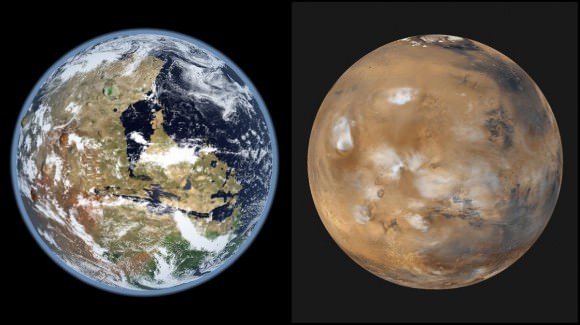
To determine if Mars had enough gases for a greenhouse effect, Jakosky and Edwards analyzed data from NASA’s Mars Reconnaissance Orbiter (MRO) and Mars Odyssey spacecraft to determine the abundance of carbon-bearing minerals in Martian soil and CO2 in polar ice caps. They they used data from NASA’s MAVEN mission to determine the loss of the Martian atmosphere to space. As Prof. Jakosky explained:
“Carbon dioxide (CO2) and water vapor (H2O) are the only greenhouse gases that are likely to be present on Mars in sufficient abundance to provide any significant greenhouse warming… Our results suggest that there is not enough CO2 remaining on Mars to provide significant greenhouse warming were the gas to be put into the atmosphere; in addition, most of the CO2 gas is not accessible and could not be readily mobilized. As a result, terraforming Mars is not possible using present-day technology.”
Although Mars has significant quantities of water ice, previous analyses have shown that water vapor would not be able to sustain a greenhouse effect by itself. In essence, the planet is too cold and the atmosphere too thin for the water to remain in a vaporous or liquid state for very long. According to the team, this means that significant warming would need to take place involving CO2 first.
However, Mars atmospheric pressure averages at about 0.636 kPA, which is the equivalent of about 0.6% of Earth’s air pressure at sea level. Since Mars is also roughly 52% further away from the Sun than Earth (1.523 AUs compared to 1 AU), researchers estimate that a CO2 pressure similar to Earth’s total atmospheric pressure would be needed to raise temperatures enough to allow for water to exist in a liquid state.

According to the team’s analysis, melting the polar ice caps (which is the most accessible source of carbon dioxide) would only contribute enough CO2 to double the Martian atmospheric pressure to 1.2% that of Earth’s. Another source is the dust particles in Martian soil, which the researchers estimate would provide up to 4% of the needed pressure. Other possible sources of carbon dioxide are those that are locked in mineral deposits and water-ice molecule structures known as “clathrates”.
However, using the recent NASA spacecraft observations of mineral deposits, Jakosky and Edwards estimate that these would likely yield less than 5% of the require pressure each. What’s more, accessing even the closest minerals to the surface would require significant strip mining, and accessing all the CO2 attached to dust particles would require strip mining the entire planet to a depth of around 90 meters (100 yards).
Accessing carbon-bearing minerals deep in the Martian crust could be a possible solution, but the depth of these deposits is currently unknown. In addition, recovering them with current technology would be incredibly expensive and energy-intensive, making extraction highly impractical. Other methods have been suggested, however, which include importing flourine-based compounds and volatiles like ammonia.
The former was proposed in 1984 by James Lovelock and Michael Allaby in their book, The Greening of Mars. In it, Lovelock and Allaby described how Mars could be warmed by importing chlorofluorocarbons (CFCs) to trigger global warming. While very effective at triggering a greenhouse effect, these compounds are short-lived and would need to be introduced in significant amounts (hence why the team did not consider them).
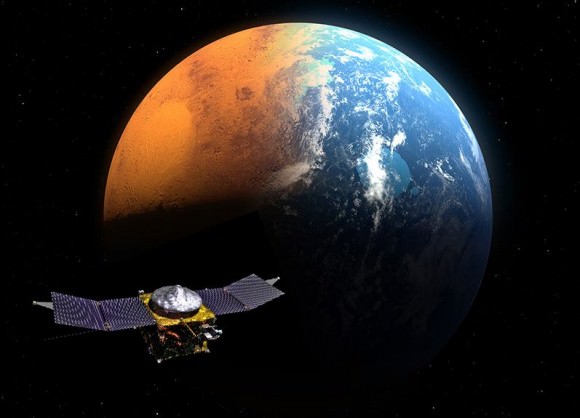
The idea of importing volatiles like ammonia is an even more time-honored concept, and was proposed by Dandridge M. Cole and Donald Cox in their 1964 book, “Islands in Space: The Challenge of the Planetoids, the Pioneering Work“. Here, Cole and Cox indicated how ammonia ices could be transported from the outer Solar System (in the form of iceteroids and comets) and then impacted on the surface.
However, Jakosky and Edwards’ calculations reveal that many thousands of these icy objects would be required, and the sheer distance involved in transporting them make this an impractical solution using today’s technology. Last, but not least, the team considered how atmospheric loss could be prevented (which could be done using a magnetic shield). This would allow for the atmosphere to build up naturally due to outgassing and geologic activity.
Unfortunately, the team estimates that at the current rate at which outgassing occurs, it would take about 10 million years just to double Mars’ current atmosphere. In the end, it appears that any effort to terraform Mars will have to wait for the development of future technologies and more practical methods.
These technologies would most likely involve more cost-effective means for conducting deep-space missions, like nuclear-thermal or nuclear-electric propulsion. The establishment of permanent outposts on Mars would also be an important first step, which could be dedicated to thickening the atmosphere by producing greenhouse gases – something humans have already proven to be very good at here on Earth!
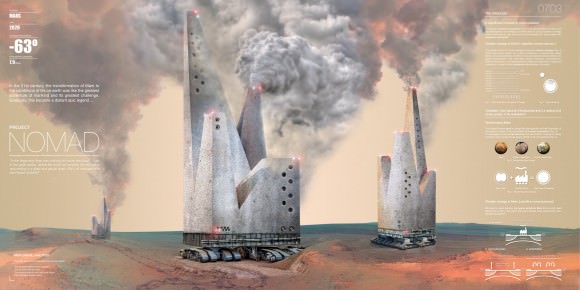
There’s also the possibility of importing methane gas from the outer Solar System, another super-greenhouse gas, which is also indigenous to Mars. While it constitutes only a tiny percentage of the atmosphere, significant plumes have been detected in the past during the summer months. This includes the “tenfold spike” detected by the Curiosity rover in 2014, which pointed to a subterranean source. If these sources could be mined, methane gas might not even need to be imported.
For some time, scientists have known that Mars was not always the cold, dry, and inhospitable place that it is today. As evidenced by the presence of dry riverbeds and mineral deposits that only form in the presence of liquid water, scientists have concluded that billions of years ago, Mars was a warmer, wetter place. However, between 4.2 and 3.7 billion years ago, Mars’ atmosphere was slowly stripped away by solar wind.
This discovery has led to renewed interest in the colonizing and terraforming of Mars. And while transforming the Red Planet to make it suitable for human needs may not be doable in the near-future, it may be possible to get the process started in just a few decades’ time. It may not happen in our lifetime, but that does not mean that the dream of one-day making “Earth’s Twin” truly live up to its name won’t come true.
Further Reading: NASA
Could Cyanobacteria Help to Terraform Mars?
Billions of years ago, Earth’s atmosphere was much different than it is today. Whereas our current atmosphere is a delicate balance of nitrogen gas, oxygen and trace gases, the primordial atmosphere was the result of volcanic outgassing – composed primarily of carbon dioxide, methane, ammonia, and other harsh chemicals. In this respect, our planet’s ancient atmosphere has something in common with Mars’ current atmosphere.
For this reason, some researchers think that introducing photosynthetic bacteria, which helped covert Earth’s atmosphere to what it is today, could be used to terraform Mars someday. According to a new study by an international team of scientists, it appears that cyanobacteria can conduct photosynthesis in low-light conditions. The results of this study could have drastic implications for Mars, where low-light conditions are common.
The study, titled “Photochemistry beyond the red limit in chlorophyll f–containing photosystems“, appeared in the the journal Science. The study was led by Dennis J. Nürnberg of the Department of Life Sciences at Imperial College, London, and included members from the Research School of Chemistry, ANU, the Consiglio Nazionale delle Ricerche, Queen Mary University of London, and the Institut de Biologie Intégrative de la Cellule.
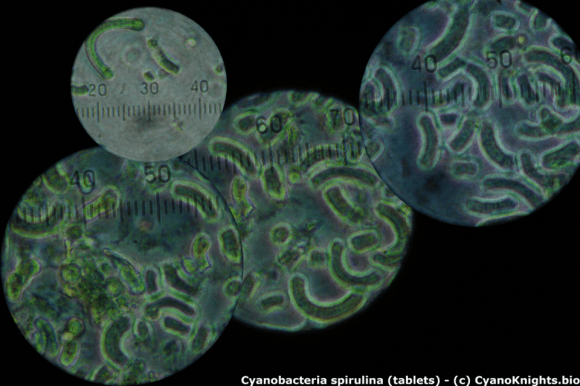
Cyanobacteria are some of the most ancient organisms on Earth, with fossil evidence indicating that they existed as early as the Archean Era (c.a 3.5 billion years ago). During this time, they played a vital role in converting the abundant CO² in the atmosphere into oxygen gas, which eventually gave rise to ozone (O³) that helped protect the planet from harmful solar radiation.
The photochemistry used by these microbes is similar to what plants and trees – which subsequently evolved – rely on today. The process comes down to red light, which plants absorb, while reflecting green lights thanks to their chlorophyll content. The darker the environment, the less energy plants are able to adsorb, and thus convert into chemical energy.
For the sake of their study, the team led by Nürnberg sought to investigate just how dark an environment can become before photosynthesis becomes impossible. Using a species of bacteria known as Chroococcidiopsis thermalis (C. thermalis), they exposed samples of cyanobacteria to low light to find out what the lowest wavelengths that they could absorb were.
Previous research has suggested that the lower limit for photochemistry to occur was a light wavelength of 700 nanometers – known as the “red limit”. However, the team found that C. thermalis continued to conduct photosynthesis at wavelengths of up to 750 nanometers. The key, according to the team, lies in the presence of previously undetected long-wavelength chlorophylls, which the researchers traced back to the C. thermalis genome.
The researchers traced the origin of these chlorophylls to the C. thermalis genome, which they located in a specific gene cluster that is common in many species of cyanobacteria. This suggests that the ability to surpass the red limit is actually quite common, which has numerous implications. For one, the findings indicate that the limits of photosynthesis are greater than previously thought.
On the other hand, these findings indicate that certain organisms can function using less fuel, which the researchers refer to as an “unprecedented low-energy photosystem”. To Krausz and his colleagues, this photosystem could be the first wave in an effort to terraform Mars. Along with efforts to thicken the atmosphere and warm the environment, the introduction of C. thermalis and terrestrial plants could slowly make Mars suitable for human habitation.
As Krausz explained in a recent interview with Cosmos:
“This might sound like science fiction, but space agencies and private companies around the world are actively trying to turn this aspiration into reality in the not-too-distant future. Photosynthesis could theoretically be harnessed with these types of organisms to create air for humans to breathe on Mars. Low-light adapted organisms, such as the cyanobacteria we’ve been studying, can grow under rocks and potentially survive the harsh conditions on the red planet.”
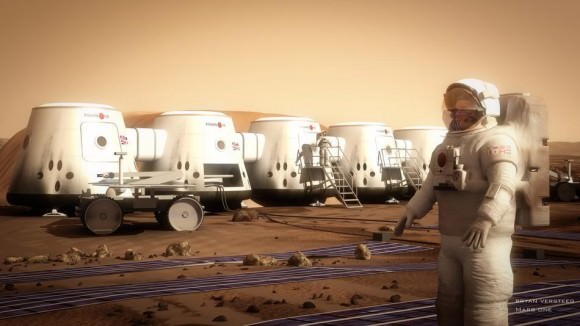
In this respect, Krausz and his colleagues are joined by groups like the CyanoKnights – a team of students and volunteer scientists from the University of Applied Science and the Technical University in Darmstadt, Germany. Much like Krausz’s team, the CyanoKnights that want to seed Mars with cyanobacteria in order to trigger an ecological transformation, thus paving the way for colonization.
This idea was submitted as part of the Mars One University Competition, which took place in the summer of 2014. What’s more, there have been recent research findings that indicate that organisms similar to cyanobacteria may already exist on other planets. If this most recent study is correct, it means that such organisms could survive in low-light conditions, which means astronomers could expand their search for potential life to other locations in the Universe.
From offering humans the means to conduct terraforming under more restrictive conditions to assisting in the search for extra-terrestrial life, this research could have some drastic implications for our understanding of life in the Universe, and how to expand our place in it.
Construction Tips from a Type 2 Engineer: Collaboration with Isaac Arthur
By popular request, Isaac Arthur and I have teamed up again to bring you a vision of the future of human space exploration. This time, we bring you practical construction tips from a pair of Type 2 Civilization engineers.
To make this collaboration even better, we’ve teamed up with two artists, Kevin Gill and Sergio Botero. They’re going to help create some special art, just for this episode, to help show what some of these megaprojects might look like.
Continue reading “Construction Tips from a Type 2 Engineer: Collaboration with Isaac Arthur”
Astronomy Cast Ep. 439: Destroy and Rebuild, Pt. 3: How Do We Terraform Earth?
We always want to talk about how we can make Mars more Earth like, but the reality is that we’re making Earth more Venus-Like. We’re Venusforming Earth. What are the various factors we’re impacting on a global scale, and how can we fix them?
Visit the Astronomy Cast Page to subscribe to the audio podcast!
We usually record Astronomy Cast as a live Google+ Hangout on Air every Friday at 1:30 pm Pacific / 4:30 pm Eastern. You can watch here on Universe Today or from the Astronomy Cast Google+ page.
Where Are All The Alien Robots?
If you’ve seen at least one other episode of the Guide to Space, you know I’m obsessed about the Fermi Paradox. This idea that the Universe is big and old, and should be teeming with life. And yet, we have no evidence that it exists out there. We wonder, where are all the aliens?
Ah well, maybe we’re in a cosmic zoo, or maybe the Universe is just too big, or the laws of physics prevent any kind of meaningful travel or communications. Fine. I doubt it, but fine.
Continue reading “Where Are All The Alien Robots?”How Do We Terraform Ceres?
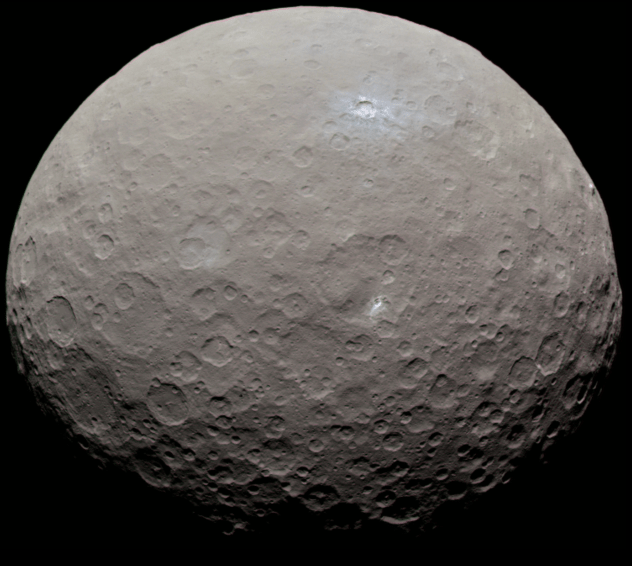
We continue our “Definitive Guide to Terraforming” series with a look at another body in our Solar System – the dwarf planet Ceres. Like many moons in the outer Solar System, Ceres is a world of ice and rock, and is the largest body in the Asteroid Belt. Humans beings could one day call it home, but could its surface also be made “Earth-like”?
In the Solar System’s Main Asteroid Belt, there are literally millions of celestial bodies to be found. And while the majority of these range in size from tiny rocks to planetesimals, there are also a handful of bodies that contain a significant percentage of the mass of the entire Asteroid Belt. Of these, the dwarf planet Ceres is the largest, constituting of about a third of the mass of the belt and being the sixth-largest body in the inner Solar System by mass and volume.
In addition to its size, Ceres is the only body in the Asteroid Belt that has achieved hydrostatic equilibrium – a state where an object becomes rounded by the force of its own gravity. On top of all that, it is believed that this dwarf planet has an interior ocean, one which contains about one-tenth of all the water found in the Earth’s oceans. For this reason, the idea of colonizing Ceres someday has some appeal, as well as terraforming.
Continue reading “How Do We Terraform Ceres?”

